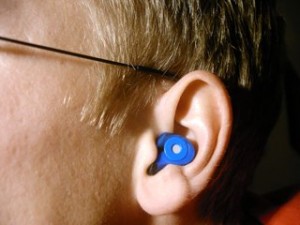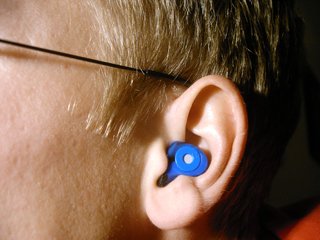Protect Your Hearing
Mary Plaine, Principal Librarian with the Baltimore Symphony, recently posted a New York Times article by Jane Brody on Orchestra-L, ICSOM’s list-serve, about what causes hearing lost. (Thank you, Mary!) The article cites a new book by Katherine Bouton, “Shouting Won’t Help: Why I — and 50 Million Other Americans — Can’t Hear You.” According to the author, the cause is “the noise we blithely subject ourselves to day after day.”
The article talks about the damage done by ear buds, restaurants that are designed intentionally to be noisy to create “buzz,” loud rock concerts, and every-day devices (hair dryers, lawn mowers,  leaf blowers, etc.). We have a finite number of hair cells in our ears, and these can be destroyed by loud or repetitive noise. Once gone, they are never replaced.
leaf blowers, etc.). We have a finite number of hair cells in our ears, and these can be destroyed by loud or repetitive noise. Once gone, they are never replaced.
For the past two decades, I have worn earplugs while playing in symphony if the trumpets are behind me. Even so, my hearing is damaged enough that I cannot follow a conversation in a meeting held in a room where people are seated in a square. Forget about a loud restaurant. I had my hearing tested recently and it was determined that my hearing loss is all occupational.
My orchestra has sound shields – I always ask for one if I’m in front of trumpets. But our Technical Director, Ken Trestman, is somewhat reluctant to put them out as a solution to loud noise. He always reminds my colleagues that sound shields don’t lower the decibel level – they just divert some of the sound. Ergo I use both my ear plugs and the sound shield.
I am eternally amazed at the number of colleagues “in the line of fire” who don’t wear earplugs. I understand that the plugs seriously impact how you hear things on stage, but is losing your hearing worth it? Playing Beethoven with earplugs in is a horrific thing to do, but the alternative is even worse, in my opinion. The trick is to find the right earplugs, and learn how to use them.
With the advice of Lisa Wong, M.D., author of Scales to Scalpels, I will be interviewing audiologists and makers of musician ear plugs in the next few months, to put together an in-depth analysis of the best practices available for musicians to protect their hearing.
But perhaps the simple solution is to reconfigure the stage so that loud instruments are not always behind the same sections – move the brass from behind the violas to behind the 2nd violins every other concert series. Alternate the percussion from side to side as well, as logistically possible. Playing in an orchestra should not inevitably result in severe hearing loss.


No comments yet.
Add your comment